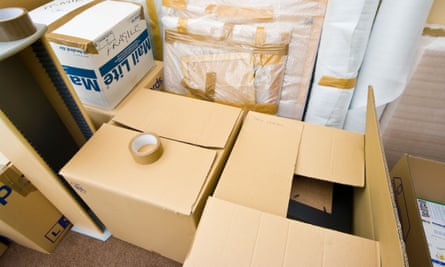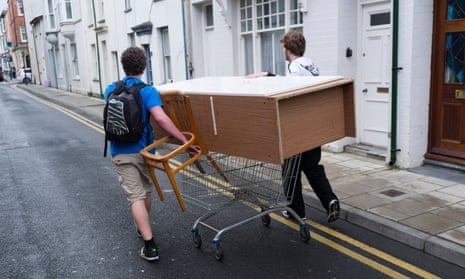In 10 years, I’ve moved over 10 times. I’ve moved when technology such as Uber has created convenience (albeit at a cost) and I’ve moved when time is not an object but money is – yes, I have previously lugged all of my things across London on public transport, and it’s not pretty. I’ve made enough mistakes to go around, but with organisation and planning you don’t need to waste time or money making your next move.
1. Be a bedroom elitist
I spent years waiting until the last minute to throw things away, donate them to a charity shop, or convince friends to wear the dubious items. Save your friendships by starting as you mean to go on. Hierarchically organise your room: give the top spot in your drawer or wardrobe to your most loved items, with second-best pieces kept in the cupboard. Clothes in the relegation zone can be kept under the bed and the permanently excluded outside of your room completely.
This means you’ll be ready to pack up in no time – useful for movers who tend to leave things to the last minute.
Why not make a little money , too? If you have time, sell on Gumtree. A low-hassle, eco-friendly option is Freecycle – a local network of people jumping at the chance to give away their stuff, or take yours on. “Members of the public will literally come and carry your unwanted goods out of your door,” says professional mover Ed Davis from Davis & Mac movers. “If you don’t get rid of stuff, you’ll end up paying someone like us at the other end.”
2. Hold a last supper
Boss that you need to woo? Friend that you’ve been neglecting? In the last weeks before moving, share the love by inviting them to a last supper. This is a great way to start using up all of those niche buys – like the sauces from the Chinese supermarket that you vowed you’d learn to use and never did.
This will also help you prioritise which jars you’re taking with you, and which to use up. Take the spice rack for example. It is common practice for movers to throw away these small and insignificant gems in a bid to make the load lighter. However, replenishing a hearty spice rack can be far more costly than the burden of moving it.
Instead of turfing out valuable staples, try to find a convenient way of moving them using space that would otherwise go unfilled. Empty Tupperware is perfect.

3. Stack it properly
Different people swear by different moving devices when it comes to packing stuff up; from the sturdy blue IKEA bag, to wangling cardboard crisp boxes for free from the local off-licence. The truth of the matter is that your mode of transportation will very much depend on you. “There’s a broad difference between a married couple moving out of a family home, and a single person renting,” says professional mover Davis. He suggests cardboard boxes for their prime stacking ability: “They square off the load – but don’t leave them half-full or you can’t stack them, so it defeats the purpose.” In particular, this is an area where cost-cutting might be to your detriment, he says. “You need a double-walled box, with two rungs of cardboard instead of one around the edge, otherwise they’ll easily collapse.”
For a sturdier alternative to cardboard, you can rent plastic crates. Believe it or not, there are some eco bonuses that come alongside these crates. “They are endlessly reused,” states Davis, “they get delivered and the crate hire company comes and picks them up.” Meaning they’re great if you’re feeling lazy, or want to save space in your house throughout the year.
4. Don’t forget your plants
When it comes to moving, time is money – quite literally. Making an additional trip or clocking up extra, unplanned hours on the removal van can shoot costs up.
Think carefully about objects that take up the most space. Plants, for example, are particularly troublesome as they can’t be stacked and have to stand flat. Use space wisely with these awkwardly-shaped critters – an old wine box will hold a selection of house plants, minimising their individual footprint in the van and giving them a steady footing while in transit.
5. Travel correctly
My first tip for the journey is never be tempted by an Uber. They tend to be very sporadic about agreeing to move things, and getting stranded roadside with all your possessions and multiple cancellation charges won’t be worth it in the end.
Zipvans are a good alternative because you get in and out in your own time and you don’t have to pay for a driver.
The key thing is to remember that even though someone might not be hounding you in a Zipvan (unless it’s your mate driving), you’re still paying for it – so treat this like a paid-for service. Have your things packed and ready to go as soon as the clock starts ticking.
Zipvan charges an annual fee of around £20, but this is sometimes removed as an offer on its website. Renting the van itself can cost as little as £10 per hour.
